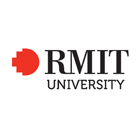Doctor of Philosophy (PhD) in Design
- Home
- Courses
- RMIT University (Royal Melbourne Institute of Technology University)
- Doctor of Philosophy (PhD) in Design
Doctor of Philosophy (PhD) in Design
The RMIT School of Design is internationally recognised as a leader in design education, research and practice. With industry connections and social grounding, the School is focussed on the future of design. This program is an exploration of new territories of design research, contributions to the knowledge base of the…
Categories
COURSE DESCRIPTION
The RMIT School of Design is internationally recognised as a leader in design education, research and practice. With industry connections and social grounding, the School is focussed on the future of design.
This program is an exploration of new territories of design research, contributions to the knowledge base of the discipline, and work toward the redefinition of aspects of design. It also develops advanced research skills to prepare you for a career in industry, academia and other settings that require systematic and critical analysis.
We believe that research is conducted through designing and that utilising this process as a means of increasing knowledge parallels research in fascinating ways. Candidates are supported and engaged in communities of practice that share interests, ideas, discourses and ways of doing things, and explore the boundaries of design thinking.
The Doctor of Philosophy may be undertaken in a project, thesis by publication or thesis mode.
Career
Upon graduation, you may pursue an academic career or senior positions in studios, galleries, museums, festivals, non-government organisations, art organisations, companies and venues.
You will also be able to work as research fellows and postdoctoral research fellows on postdoctoral research projects in university and government organisations.
EDUCATIONAL INSTITUTION
Since its establishment in 1887, Royal Melbourne Institute of Technology University (RMIT) has been meeting the needs of the community surrounding it. Originally a Working Men’s College, RMIT showed its flexibility during World War Two, training over 20,000 servicemen in communications to help with the war effort.Now, it is a true pioneer in international education, championing cross-border study opportunities with campuses in various countries. Granted formal university status in 1992, RMIT is ranked 21st in the world for universities that are less than 50 years old.RMIT is the largest higher education institution in Australia, currently with more than 82,000 students. With nearly 20% of those students coming from overseas, it is a university that truly welcomes diversity and is a melting pot of different cultures. RMIT has three campuses in Vietnam, a European hub in Barcelona, an office in Indonesia, and partners with 200+ institutions in 42 countries to provide study opportunities worldwide.
Since its establishment in 1887, Royal Melbourne Institute of Technology University (RMIT) has been meeting the needs of the community surrounding it. Originally a Working Men’s College, RMIT showed its flexibility during World War Two, training over 20,000 servicemen in communications to help with the war effort.
Now, it is a true pioneer in international education, championing cross-border study opportunities with campuses in various countries. Granted formal university status in 1992, RMIT is ranked 21st in the world for universities that are less than 50 years old.
RMIT is the largest higher education institution in Australia, currently with more than 82,000 students. With nearly 20% of those students coming from overseas, it is a university that truly welcomes diversity and is a melting pot of different cultures. RMIT has three campuses in Vietnam, a European hub in Barcelona, an office in Indonesia, and partners with 200+ institutions in 42 countries to provide study opportunities worldwide.




